Keep your clothes and your washing machine fresh with this cheap, easy-to-make DIY laundry detergent.
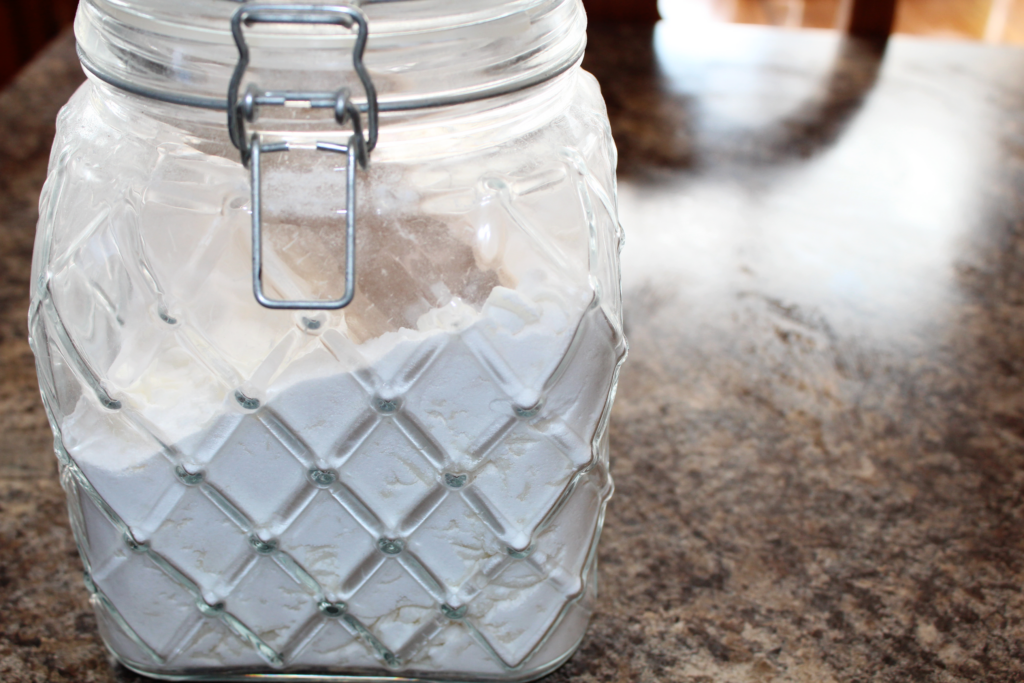
Laundry day; the chore that almost no one looks forward to. Even us. Between the dog fur, the goose feathers, and all the dirt that gets tracked through the house, there’s a pile of clothes stacked up in the laundry room by the time we get to the weekend. That’s why it was so important for us to find a detergent that cleans the toughest stains and breaks down the strongest odors. After spending hours researching the most effective and safest detergent, we settled on our very own DIY laundry detergent.
Unfortunately, most store-bought detergents have plastic coatings that leave a film on all the clothing in the washing machine. Since my husband and I both have super sensitive skin, this coating causes various skin issues such as dry, itchy skin, rashes, and eczema. Not only this, but many of the detergents and softeners are syrupy thick and gum up both the washer and dryer, forcing you to pay out of pocket to fix or outright replace the machines much sooner than you should ever have to.
Why we started making DIY laundry detergent
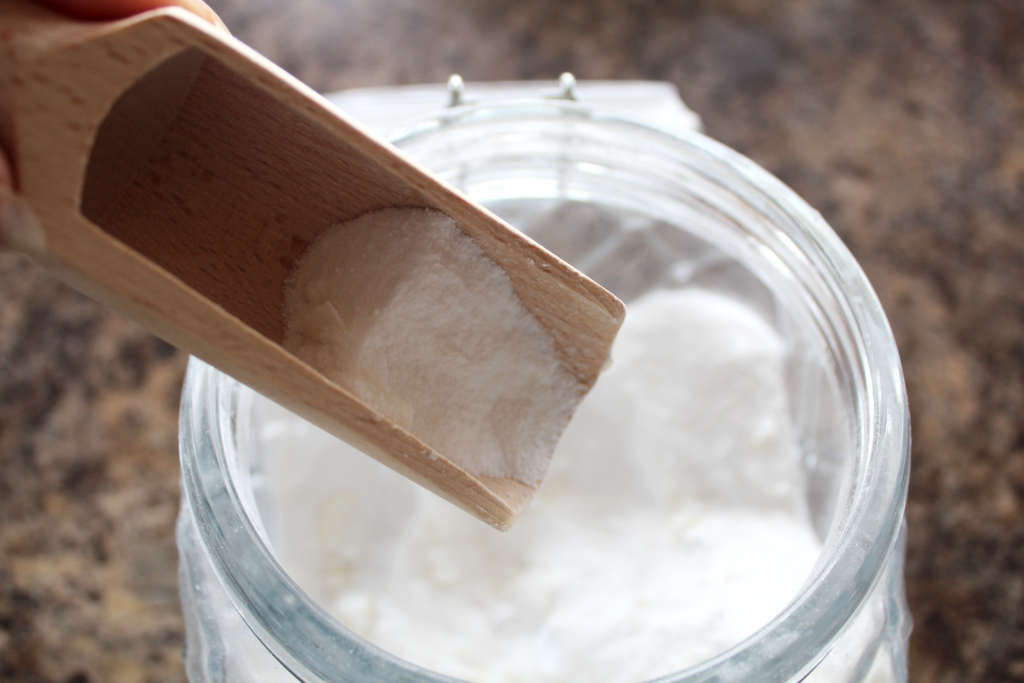
As we said above, the plastic coating in many detergents left our clothes with an uncomfortable film that either made us break out in hives or just made the clothes feel stiff and crusty. As we looked into solutions for these problems, we found some concerning pieces of information.
Firstly, the United States Environmental Protection Agency says, “Unlike food products, manufacturers of chemical products are not required to list ingredients on their containers or make them public.” And historically, there has always been at least one company or two who takes advantage of not being required to list the ingredients in their products; either by using unethically cheap materials or outright toxic ingredients.
The dangers of commercial laundry detergents
One of these toxic ingredients added to laundry detergents are surfactants. Surfactants cause numerous issues to the human body, such as hormonal imbalances and damage to the liver. Surfactants are also carcinogenic. Not only do surfactants impact the human body, but they impact the environment as well. Surfactants change the properties of water. They are toxic to fish and kill beneficial microorganisms in the water.
Another common issue we found regarded the fragrances of store-bought laundry detergent. I’m very sensitive to smells, and almost every laundry detergent smelled like I was soaking my clothes in cheap perfume. This gave me migraines and non-stop sneezing throughout the day. It even went so far as ruining my ability to focus or even sleep.
Another well-known danger of store-bought laundry detergent is accidental consumption (largely due to the Tide PODS® craze). While you should absolutely NOT eat this DIY laundry detergent either, the temptation for smaller children should diminished thanks to it not being wrapped in a candy-esque pod. You can store this laundry detergent in almost any container and could (and probably should for safe measure) even put it in a childproof container.
Ingredients for DIY laundry detergent
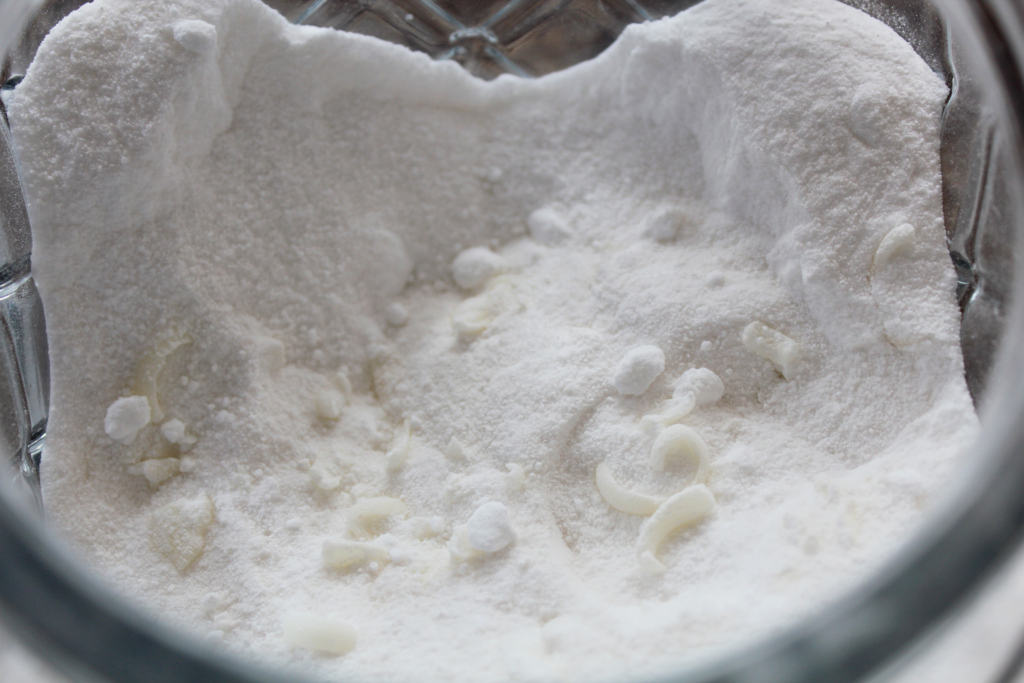
Washing soda
Washing soda has been around for quite some time. Originally, it was made with plant ashes. However, the recipe for modern day washing soda has been around since the 1900’s as a combination of limescale and salt. Its high alkalinity allows it to help remove the toughest stains from fabrics and even ceramics. Keep in mind that high alkalinity products are very basic. Specifically, washing soda has a pH level of 11. The problem with this is that the skin is usually around a pH level of 5, so the difference in pH is very noticeable. High-alkalinity products like washing soda can strip your skin, causing dryness and inflammation, so I recommend using gloves while making this detergent to avoid any irritation.
Baking soda
Baking soda is a superstar when it comes to cleaning, whether it be dishes, clothes, sinks, toilets, etc. thanks to its odor prevention. Along with odor prevention, I add baking soda to this recipe because it boosts the effectiveness of this detergent and helps make my clothes softer. Baking soda can also reduce the suds created by the soap. While suds aren’t necessarily bad, they can reduce the detergent’s scrubbing power if there are too many in the wash at once.
Borax
Like baking soda, borax also helps keep your clothing soft after washing by preventing hard water deposits or any of the laundry detergent from sticking to your fabrics.
Bar of soap
Adding soap increases the detergent’s effectiveness at cleaning the laundry and scrubbing things like dirt out of the fabrics. Soap is also what makes this laundry detergent sudsy. You can use whatever solid bar of soap you wish (I make my own for this detergent!) If you have more sensitive skin, I’d recommend looking for a goat’s milk soap or castile soap base. If you don’t have sensitive skin, you can try out Fels Naphtha soap, which is made specifically for laundry. I recommend using an organic soap bar with either no scent or a very light scent if possible. You’ll want to grate your bar of soap using either a cheese grater or your food processor for this recipe.
Essential oils (optional)
Essential oils are completely optional, especially if you decide to go with a scented soap bar. Feel free to play around with whatever scents you want your clothes to smell like and adjust the amounts until you get your perfect level of scent! Some of my favorite combos are lemon lavender or orange rose for the airy spring and summer and a cinnamon vanilla or a chai spice for the cozier fall and winter seasons.
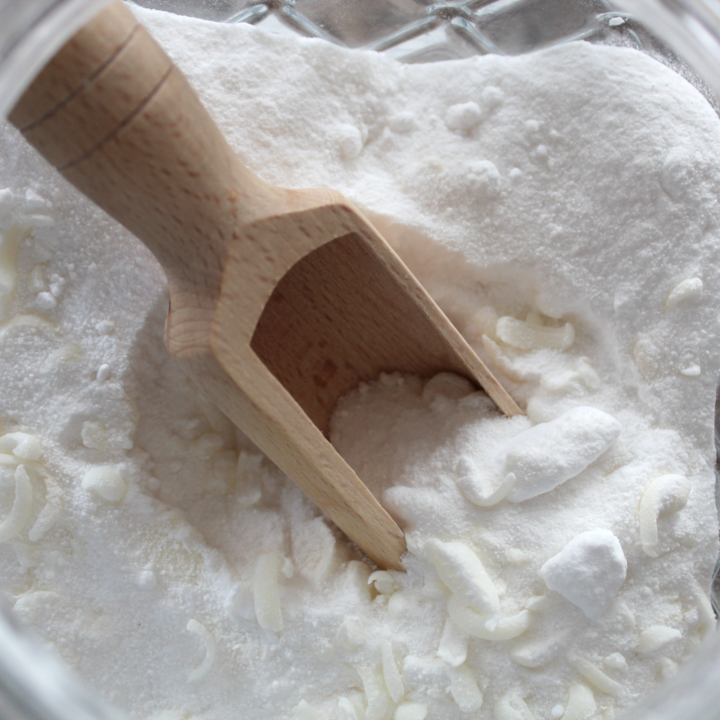
Homemade Laundry Detergent
Create this super easy laundry detergent that is residue free and will leave your clothes smelling and feeling clean. The instructions for making this detergent are some of the simplest we have. Counting the step where you put the detergent in the washing machine, there are a whopping two steps.
Ingredients
- 2 cups washing soda
- 2 cups baking soda
- 2 cups borax
- 1 bar of soap (grated)
- 20 drops Essential oils (optional)
Instructions
- Mix ingredients together and put in an airtight (preferably glass) container. You might need to give the container a shake every now and then if the grated soap starts to settle on the bottom.
- Put one tablespoon into the washing machine's detergent basin and use white vinegar in the softener basin.
- Run your washer as normal and enjoy your super clean clothes!
Frequently-Asked Questions
Can I use DIY laundry detergent in high-efficiency machines?
Yes! You can absolutely use this detergent in high-efficiency machines. It shouldn’t leave residue in your washer.
Is DIY laundry detergent safe with bleach?
Absolutely. Not only is it safe to use with bleach, but this diy laundry detergent also enhances the effectiveness of bleach. As always when using bleach, be sure to spot test to make sure it is giving you the desired results.
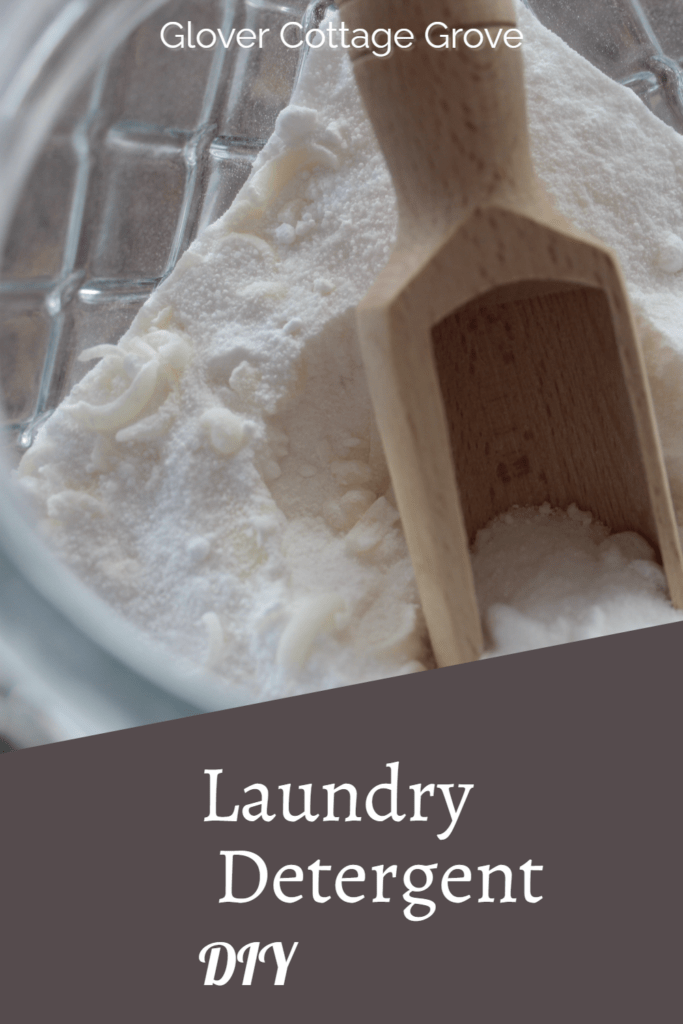

Leave a Reply
You must be logged in to post a comment.